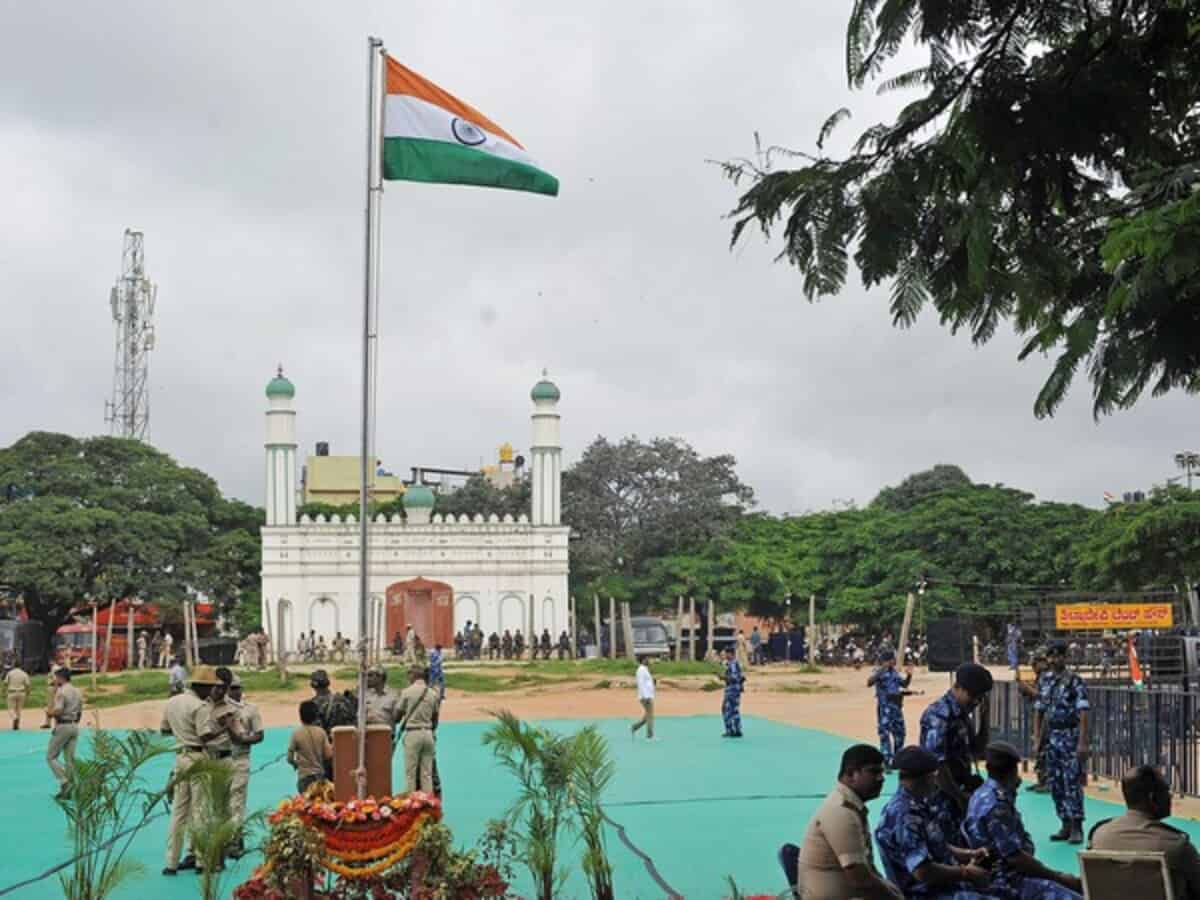
Hubli: After AIMIM approached the municipal corporation seeking permission to celebrate Tipu Jayanti at the Idgah Maidan in Karnataka’s Hubli, two more organisations submitted a memorandum seeking permission to celebrate Holi by installing the Kamdev statue and celebrating Onake Obavva Jayanti at the same place.
After SC’s nod to celebrate Ganesh Chaturthi in Hubballi Idgah Maidan, some Dalit organisations and All India Majlis-e-Ittehadul Muslimeen (AIMIM) had submitted a memorandum to the corporation commissioner seeking permission to celebrate Tipu Jayanti at Idgah Maidan.
Sri Ram Sena had also submitted a memorandum seeking permission to celebrate Kanakadasa Jayanti there.
However, Mayor Veeresh Anchatgeri had told ANI that religious activities can be done at Idgah Maidan but no big leaders will be allowed.
Back in August this year, the Karnataka High Court had allowed Ganesh Chaturthi celebrations to go ahead at the Idgah ground in Hubbali.
The order rejecting the petition filed by Anjuman-E-Islam said, the ground is the property of the Hubli-Dharawad Municipal Commission and they can allot the land to whoever they desire so.
Later, the case was moved to the Supreme Court against the Karnataka High Court order.
However, the Idgah Maidan was granted permission for celebrating Ganesh Chaturthi.
This was the first time that the Hindu festival was celebrated at the controversial ground.
The Idgah ground in Hubballi has been caught up in a controversial dispute for decades until 2010, when the Supreme Court in its judgment held that, the ground is the exclusive property of Hubli-Dharawad Municipal Corporation.
In 1921, the ground was leased to the Islamic organization, Anjuman-E-Islam for 999 years to hold prayers.
Post-Independence, many shops were opened on the premises. This was challenged in court and a long litigation process started which halted in 2010 after the Supreme Court judgment. The top court had granted permission for prayers twice a year and not to build any permanent structure on the ground.
(Except for the headline, this story has not been edited by Siasat staff and is published from a syndicated feed.)
